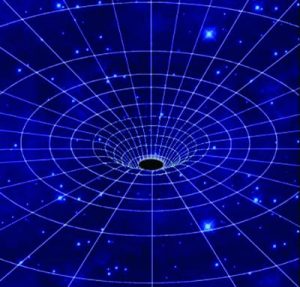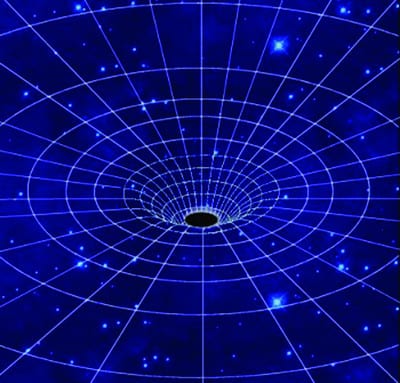 The Lense–Thirring effect, originating in rotating curved spacetimes, involves the precession of a spinning gyroscope around the axis of rotation relative to a Copernican frame. The rotating spacetime around the earth also exhibits the weaker version of this effect; this has been measured recently by the Gravity Probe B space mission. However, observation of this effect in spacetimes of large curvature (that is, in the presence of strong gravity), for example near a black hole horizon or near the surface of a neutron star, remains well beyond observational limits, despite the fact that the precession frequency has been exactly computed for such strong gravity situations.
The Lense–Thirring effect, originating in rotating curved spacetimes, involves the precession of a spinning gyroscope around the axis of rotation relative to a Copernican frame. The rotating spacetime around the earth also exhibits the weaker version of this effect; this has been measured recently by the Gravity Probe B space mission. However, observation of this effect in spacetimes of large curvature (that is, in the presence of strong gravity), for example near a black hole horizon or near the surface of a neutron star, remains well beyond observational limits, despite the fact that the precession frequency has been exactly computed for such strong gravity situations.
Acoustic analogues of gravity in perturbed fluids might provide an opportunity for observation of the Lense-Thirring precession. A rotating version of such an acoustic analogue geometry in two space dimensions, called the Draining Bathtub model, which resembles an analogue of the rotating Kerr black hole spacetime has been explored for the first time vis-a-vis the Lense-Thirring precession. In this work, the precession frequency was calculated without any ‘weak field approximation’ and its behaviour as a function of its distance from the ‘ergosphere’ of the rotating spacetime was analyzed. Observational prospects depend upon the observation of intrinsic spin of phonons in Bose Einstein condensate fluids.
Intrinsic phonon spin has been thoroughly studied in paramagnetic crystals as a result of Raman spin-phonon interactions, and may well be observed clean in cold atom systems in the near future. The matching of the behaviour of precession of such phonon spin, as a function of the phonon’s distance from the ergosphere, with the predicted behaviour of Lense–Thirring precession just reported, may serve as the observational signal of this effect.
Read more here in Annalen der Physik.
The incorrect image was originally published with this article. The new, correct image was published on 27.11.17

















